This Andhra-Based Chocolate Brand Empowered 300+ Farmers & Earned Rs 8.7 Cr in Year One
Behind every chocolate bar lies the story of a farmer — and for Manam Chocolate, that story begins in the cocoa farms of West Godavari, Andhra Pradesh.
Neither Belgian nor Swiss, this chocolate is proudly and entirely Indian. With over 300 products across 50 categories, Manam Chocolate is redefining the perception of Indian-origin cocoa on the world stage. And at the heart of it is a deep commitment to craft, community, and cocoa.
On August 15, 2023, Manam Chocolate launched its first collection in Hyderabad’s Banjara Hills — a proud tribute to the farmers who made it all possible. Among its most celebrated offerings is the Manam Signature Tablet collection, featuring 43 unique bars. Two of these — Farm Tablet No.1 and No.3 — are made from beans grown by farmers D Hari Krishna and GVS Prasad, each bar carrying the distinct flavour of a single farm.
From Farm to Tablet: A Story of Trust
“The Single Farmer Series recognises farms that have unique flavour profiles. The craft chocolate is about complexity and flavour. Everything we do is to derive complexity from the bean without adding anything. So these two or three farms we have identified as being interested enough in the single-farmer series,” says Chaitanya Muppala, CEO of Distinct Origins Private Limited (DOPL), the company behind the introduction of Manam Chocolate.
‘Manam’ means ‘we’ or ‘us’ in Telugu. The brand is designed to delight chocolate lovers and offers signature tablets, bonbons, truffles, nama, barks, fudge, palettes, rochers, clusters, macarons, gianduja, spreads, cakes, pastries, and viennoiserie.
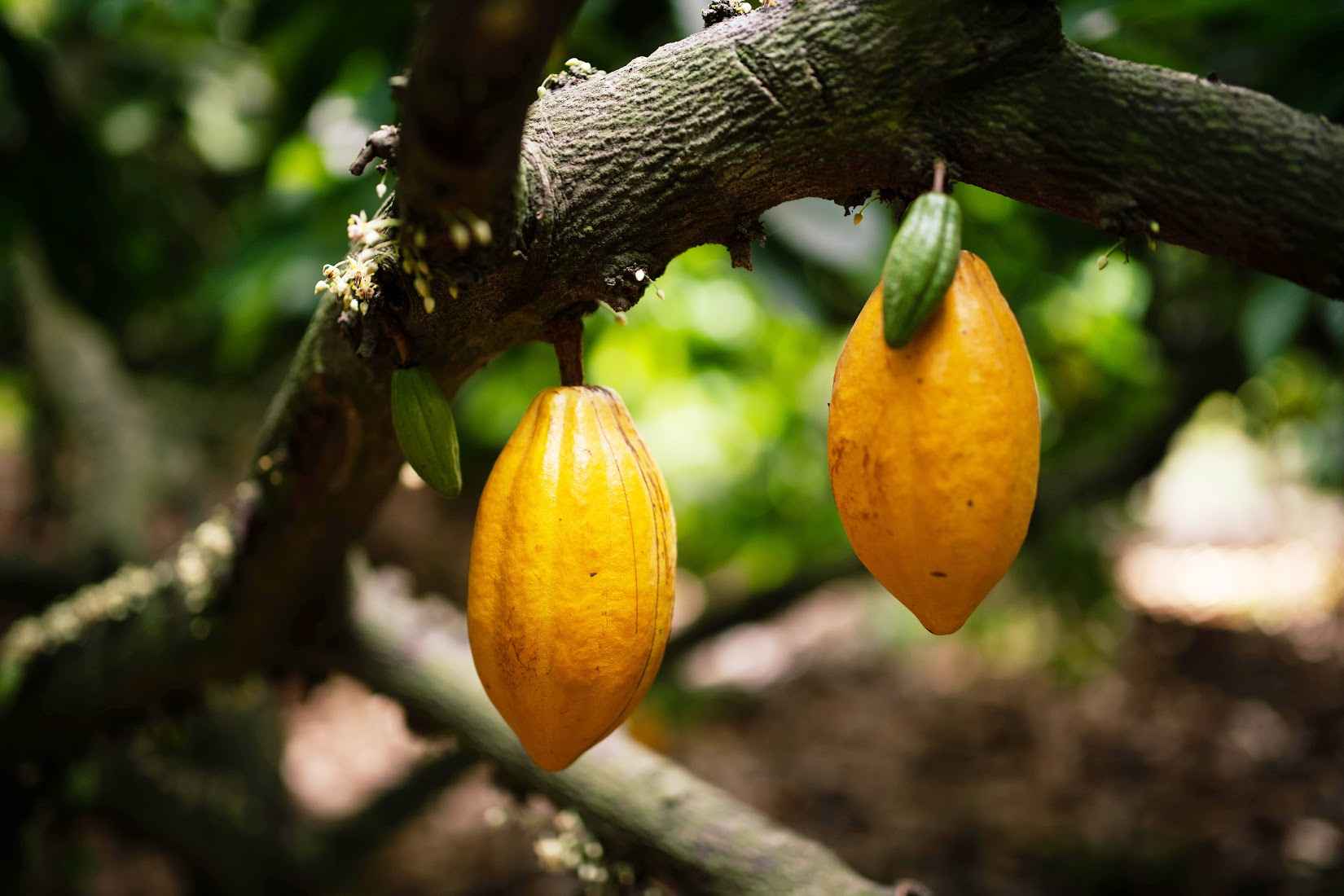 “The journey of cocoa beans from farm to fermentery and shaping into a chocolate tablet wouldn’t have been feasible without farmers’ invaluable support.”
“The journey of cocoa beans from farm to fermentery and shaping into a chocolate tablet wouldn’t have been feasible without farmers’ invaluable support.”
“The journey of cocoa beans from farm to fermentery and shaping into a chocolate tablet wouldn’t have been feasible without these farmers’ invaluable support. We appreciate their hard work. We are committed to making a high-value product from their produce,” says the chocolatier.
Crafting Chocolate, Rooted in Mithai shop
After earning his undergraduate degree in General Business Management from Sauder School of Business, University of British Columbia, Canada, and completing the Stanford Seed Program from the Stanford University Graduate School of Business’s Institute for Innovation in Developing Economies, Muppala came back to India in 2013.
His father was briefly unwell, so he started spending time in the business his father owned, – Almond House, a mithai (sweet) shop.
It was a small business with a single store. While resolving its drawbacks, he inadvertently formed a bond with it before he could realize. The business flourished under his management.
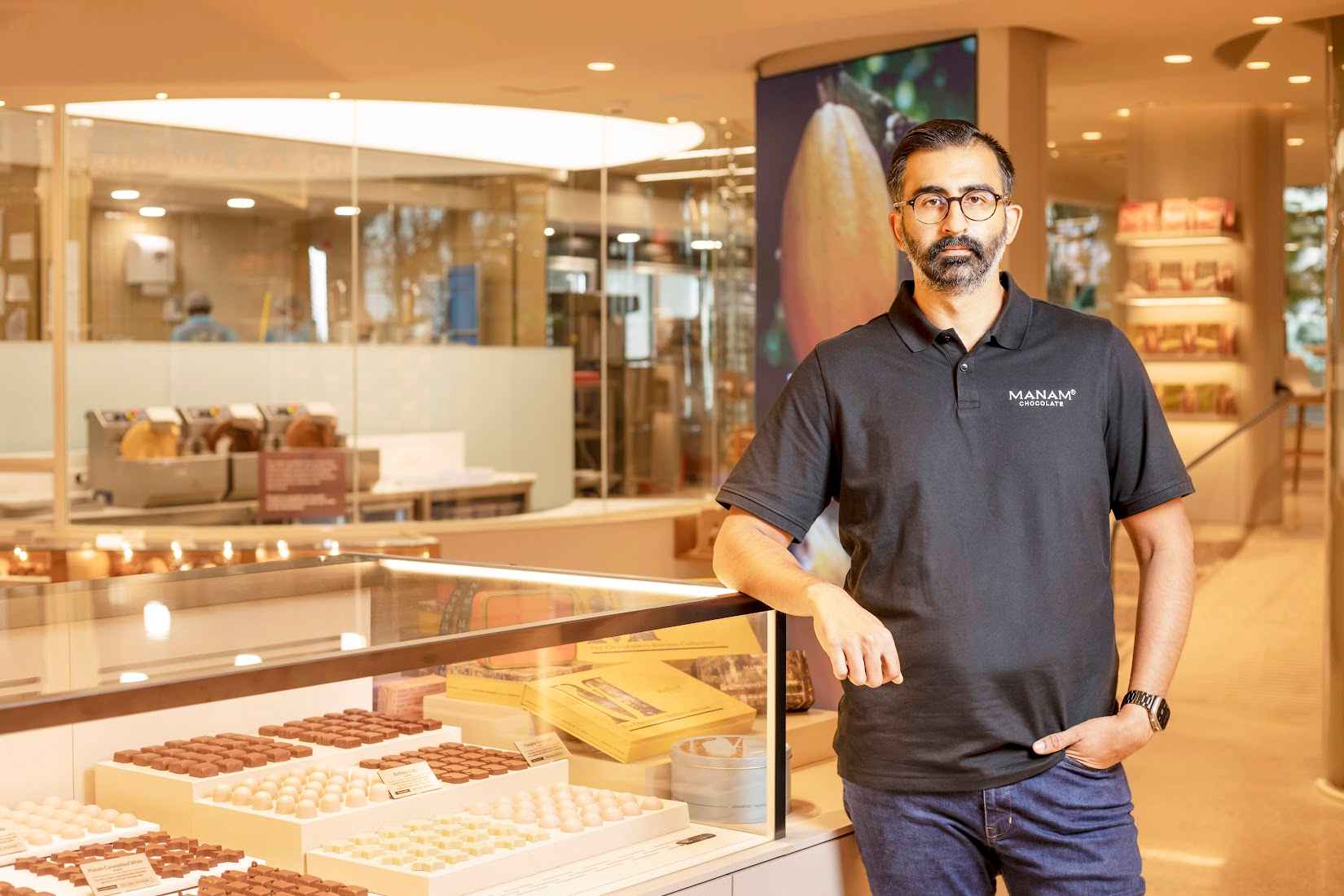 “That’s where my career started in 2013 with Almond House. It was a small brand that my father ran; now it has 14 stores in Hyderabad,” shares Chaitanya Muppala.
“That’s where my career started in 2013 with Almond House. It was a small brand that my father ran; now it has 14 stores in Hyderabad,” shares Chaitanya Muppala.
“That’s where my career started in 2013 with Almond House. We identified the strategies, and we grew that out into a fairly large business in the last 10 years. It was a small brand that my father ran; now it has 14 stores in Hyderabad,” shares the 35-year-old entrepreneur.
With 5000 square feet of space, Almond House employs various strategies. The ‘House of Brands’ is one among them. They operate multiple brands under one roof under this strategy. They have a ‘Chat’ brand called Gappe Vappe and an ultra-natural gelato brand called Indulge Ice Cream.
They also have a quarter of their business dedicated to corporate gifting. Customers visiting this segment would request gift items related to chocolate.
“We had to politely decline their request since chocolate items weren’t available. We didn’t know anything about chocolate at that time because chocolate was always something that we bought from a supplier,” admits Muppala. However, the idea of branching out into the chocolate market sparked his interest.
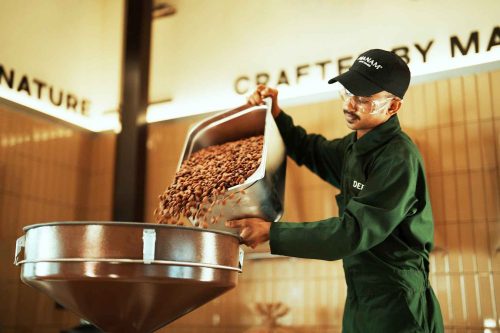 Muppala study found a key understanding that the quality of chocolate inherently depends on the quality of beans.
Muppala study found a key understanding that the quality of chocolate inherently depends on the quality of beans.
So he started mapping and contextualizing the market to understand what chocolate is. “I quickly realized that anybody involved in the chocolate industry in India is buying chocolate, melting it, moulding it, adding nuts, flavour, and sea salt, and then packaging it as their own chocolate. It didn’t seem like enough sustainable differentiation for me,” the Hyderabad-based entrepreneur tells The Better India.
At Almond House, he understood that mithai is regional. Every region has different preferences. I started realizing that our younger people’s moods are shifting from traditional categories like mithai to contemporary modern and, for some reason, Western categories like patisserie chocolates.
These days, every city has two or three chocolate brands like his mithai brands, but if they all source the same ingredients from the same multinational supplier, the end product will be the same.
Living with Farmers, Learning from the Soil
While researching the art of chocolate making, small-batch chocolate production, and the principles of craft chocolate, his study found a key understanding that the quality of chocolate inherently depends on the quality of beans.
It prompted him to search further about the origin of beans, and that led him to farms in 2018, where he spent two and a half years with the farmers in the West Godavari district of Andhra Pradesh.
“At first, the farmers were skeptical. They viewed me as an outsider from the city doing something new. I lived among them to win their trust. It took two to three years to build their confidence in me. I wanted to do business with them and help them make more money,” the businessperson continues.
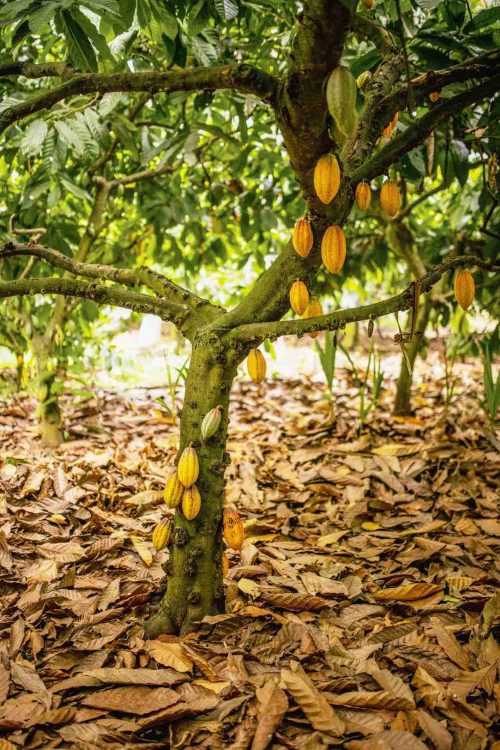 GVS Prasad says, “Working with Manam Chocolate gives us pride to see how this fruit of our land can be converted into something so delightful.”
GVS Prasad says, “Working with Manam Chocolate gives us pride to see how this fruit of our land can be converted into something so delightful.”
“My main goal was to empower farmers. I ensured that farmers profit more and also improve our revenue distribution,” he adds.
GVS Prasad (Guduri Venkata Sivarama Prasad) says, “We have been growing cocoa since the mid-1960s, but working with Manam Chocolate gives us tremendous pride to see how this fruit of our land can be converted into something so delightful.”
Devarapalli Hari Krishna explains, “With Manam Chocolate and DOPL, we are not treated like suppliers but as partners, even co-creators. Earlier, we used to grow cocoa without really knowing how much impact the soil, the climate, or our handling could have on the flavour of the cocoa beans. The engagement has enhanced our understanding that cocoa carries the taste of the land, and it’s our job to bring that out with our efforts.”
He continues, “What’s different about working with them is the respect they have for our offering. They pay us above-market rates for our fruit, but more than that, we see the value of what we grow. When our cacao goes through their Fermentery with all the scientific fermentation and drying processes that they carry out and it is turned into fine flavour cacao beans, it gives us tremendous pride. We know exactly where our fruit is going, and we know it’s being made into something truly special.”
While the farmers here produced cocoa in a conventional method, Muppala faced another challenge related to the genetics of cocoa in India, which is deeply rooted in the history of its arrival in the country.
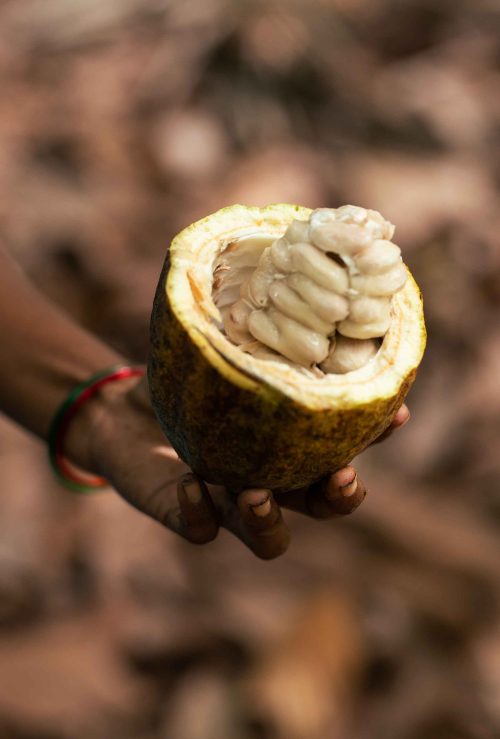 At the Manam Chocolate Karkhana, processing, retailing, and crafting of chocolate are combined under a single roof.
At the Manam Chocolate Karkhana, processing, retailing, and crafting of chocolate are combined under a single roof.
“We addressed the genetic problem through technological solutions developed by our team,” says Muppala, who noted that India grows only 0.5% of the world’s cocoa. Even if the production were to increase fourfold, the output would only represent 2% of the world’s cocoa.
The small area of land creates barriers to being a major player. The crop demands specific environmental conditions, including sufficient water and shade. It grows only between 20° north and 20° south of the Equator.
“We may never be a major cocoa-growing country, but we can make India a ‘premium’ cocoa-growing nation. After having engaged over 150 farmers cultivating cocoa across a collective area of 3,000 acres and making it India’s largest cocoa-growing region, we constructed Asia’s largest fine-flavour cocoa fermentary at Tadikalapudi in West Godavari on a four-acre land in 2021, where we execute fermentation and drying with our advanced scientific technique,” Muppala remarked.
The story of a halwai who wanted to craft chocolate
Over 270 people worked on this project over four years, culminating in its launch. Muppala realized he was a halwai who wanted to craft chocolate but ended up making something else. What about chocolate?
“And that’s when we came back to Hyderabad and started structuring what chocolate can be and should be for India as well as from India for the world. It’s our social proclivity as Indians to gift, share, and consume sweets,” mentions Muppala.
Muppala has invested significantly in the business, including creating the Manam Chocolate Karkhana, where the processing, retailing, and crafting of chocolate are combined under a single roof.
Spanning an area of 10,000 square feet, the Karkhana offers a chance to discover, explore, experience, and engage with cacao and chocolate in a dynamic and interactive setting.
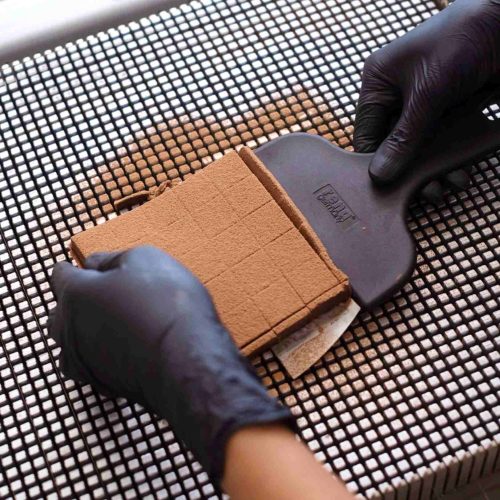 Whatever tablet or bar one buys, there is a QR code on the back. When scanned, it provides information about the farm, the farmer, and the harvest date.
Whatever tablet or bar one buys, there is a QR code on the back. When scanned, it provides information about the farm, the farmer, and the harvest date.
Whether a visitor or a customer, one can experience the captivating transformation of raw cacao beans into silky, delectable chocolate as it passes through roasting, winnowing, grinding, refining, conching, tempering, and moulding.
Whatever tablet or bar one buys, there is a QR code on the back. When scanned, it provides information about the farm, the farmer, and the harvest date. All this data is sourced from the blockchain.
“We have developed our technology. It highlights the traceability of cocoa through a blockchain-enabled system. Every single bean can be traced back to its exact farm. However, the supermarket chocolate provides no information about the source of the cocoa bean,” Muppala quipped.
Karkhana is now reaping the rewards. In its first year, the company, which employs around 200 people, recorded a turnover of Rs. 8.79 crore, achieved in only eight months of operation during the fiscal year 2023-24. The chocolate maker says, “We are growing 150% year-on-year. It’s a testament to our successful market strategy.”
India imports more than 70% of its cocoa needs despite having grown cocoa for over six decades. Muppala recently started exporting beans to the world. This February, for the first time, a major consignment of fine flavoured cocoa has been exported from India to Switzerland, where a major Swiss chocolate brand is making a single-origin India chocolate.
“We are farmers, fermenters, chocolate makers, chocolatiers, and storytellers. We see ourselves as craftspeople. Starting with the farmers, who craft at the source, then a fermenter, then a chocolate maker. Our story starts on the farms. Every store we open, our farmer has to open that,” concludes the chocolate maker.
What does it take to create fine-flavour cocoa in India’s agro-climatic conditions?
Boyapati Venkateswara Rao, one of the first member farmers associated with Distinct Origins, who owns one of the first organic cocoa farm in West Godavari District in AP, says, “In the early days, we relied heavily on chemical sprays and fertilizers to keep the cacao plants healthy. But over the past five to six years, we’ve started returning to more natural, sustainable practices.”
Rao further mentions, “We’ve found that using vermicompost significantly improves soil health, strengthens the trees, and keeps the roots active. We also apply coconut husk mulch around the base of each plant — it helps retain soil moisture and keeps the roots cool during hot weather. The result is better fruit size, more consistent pod quality, and overall healthier trees.”
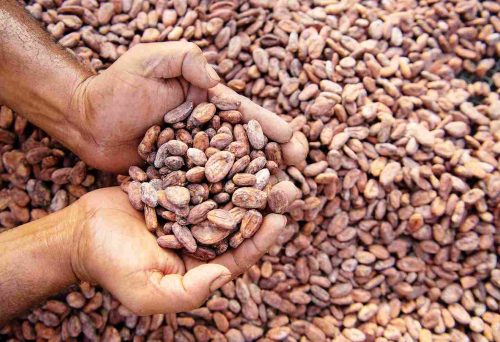 Explaining about the harvest, Rao adds, “For cacao farmers, one of the most crucial aspects is getting the harvest timing right and handling the pods carefully afterwards.”
Explaining about the harvest, Rao adds, “For cacao farmers, one of the most crucial aspects is getting the harvest timing right and handling the pods carefully afterwards.”
Explaining about the harvest, Rao adds, “For cacao farmers, one of the most crucial aspects is getting the harvest timing right and handling the pods carefully afterward. If harvested too early, the pods lack the sugars needed for proper fermentation. The beans begin to break down inside if left too long. Mastering the perfect harvest window takes experience and a deep understanding of each tree.”
Inside Manam’s kitchen
Chef Ruby Islam, Head Chef at Manam Chocolate shares, “I am someone who connects with chocolate through touch, taste, and hands-on work — that’s what keeps me inspired. My day usually starts in the kitchen with a round of checks — hygiene, of course, but also the quality of the cocoa beans that come in from the Distinct Origins Cacao Fermentery for making the couvertures at Manam Chocolate Karkhana.”
“I like making sure the team is settled in, and then we get into tasting of the different confections that’s a big part of how our day flows. We taste a lot, tweak things, discuss- it’s a very sensory, collaborative process,” he adds.
While making small batches at a time may be tricky, that’s exactly how Manam works. “Every person on the team plays a role in maintaining quality — they aren’t just going through the motions; they do tasting, observing, and passing on that care to the next stage.”
“We also maintain a food diary where we note down everything — flavors, changes, even small differences that might show up. And I honestly love when people come up to me and share what they felt when they tasted something new, that kind of feedback helps guide us and reassures me that we’re doing things right,” Chef Ruby adds.
What’s different about Manam Chocolate?
“Our chocolate is more sustainable as it’s made from cocoa which is from farms that are by default deforestation-free (unlike West Africa, where forests are burnt to set up cacao farms because of the sheer demand for the crop).”
“Our entire supply chain and process is significantly more sustainable than any industrial chocolate that we commonly consume because cacao beans for Manam Chocolate travel less than 500 km before being converted into chocolate. This is in comparison to most other chocolate (especially Industrial chocolate) which first travels as a bean and then as finished chocolate on average 12,000 to 15,000 kms on cargo sea routes,” the chef explains.
All about the man behind the brand
Born in Hyderabad, but most of his childhood was spent away. He grew up in Sahyadri School KFI, Pune (Jiddu Krishnamurti Boarding School).
“These are alternative schools. We grew up on a hill, climbing rocks and trees. Every day, the whole school would assemble at six in the evening to watch the sunset. There were only 200 of us on that hill, including teachers and service staff. We didn’t have exams till Class 9,” Muppala recalls.
At 15, he took a year off to go on a solo trip by train after completing his Class 10 in 2008. Then he went to Canada, lived in Vancouver for about seven years to complete his education, and returned to India in 2013. Muppala has a sister who lives abroad.
The chocolatier, who finds no time for hobbies these days, says, “I like to drive. The last time I drove was in 2018. I was driving from Hyderabad to Bangkok through Myanmar. But my favourite place is India,” he smiles.
The Better India got in touch with a few of Manam Chocolate’s clients, here is what they had to say about the brand.
Angana Bahadur, a commercial artist living in Delhi, says, “It instantly takes me back to my childhood, watching my mother lovingly prepare Indian sweets for us. That’s where my connection to Manam Chocolate comes from. It’s not just a chocolate brand — it’s Indian at heart, and that makes it incredibly special to me. I’m so excited it’s finally come to Delhi, and visiting the store felt like stepping into something familiar yet entirely new.”
Another customer, Angana, shares, “Manam Chocolate creations are truly mind-blowing flavours. Imagine Indian masala chai infused into chocolate — it sounds unexpected, but it works beautifully. Their dark chocolates, the orange, the hazelnut — each one is so thoughtfully crafted. You can feel how rooted it is in India, not just in the flavours, but in the way it’s made and presented.”
Where to buy: Explore their full range of chocolates at www.manamchocolate.com
News